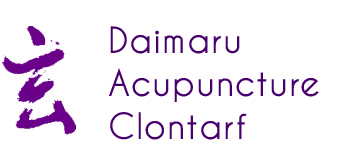

June 25th, 2012 | Posted in 2 Pain, Injuries, Sports
Pain is one of our body’s natural reactions and informs us about dysfunctions in our body or about damaging external factors. The sensation of pain occurs when pain receptors on the ends of sensory nerves are stimulated to transmit signals via the spinal cord to the brain.
Pain From Injuries, etc    In its most basic and acute form , pain can be a force for good. The sensation of pain starts in cells called noci-ceptors, which respond to injury by sending electrical messages to an area in the spinal cord called the dorsal horn. Neurotransmitters and other chemicals relay a signal to the brain—the immediate ‘ouch’. The brain interprets the message and then responds by unleashing an army of painkilling, suppressors called endorphins or endogenous opioids, as well as chemicals such as morpinephrine, to damp down the hurt. In this instance, pain serves as a warning signal and a protection mechanism function and it usually disappears when the initial damage has healed.
Just how all these factors interact depends on a host circumstances: how serious the pain is, whether there’s some sort of imminent threat to the organism, even what kind of mood you’re in that day. If, for example, you’re hurt while being chased by wild animals, your brain will pump higher levels of painkilling chemicals, to soften the agony so that you can make it out of danger.
But pain can become a blight in countless lives. In its many guises—migraine, arthritis, back pain—it causes more disability than cancer and heart disease combined. The psychological effects of pain can be devastating, ranging from depression to anxiety and sleeplessness.
Neuropathic Pain results from direct damage to any part of the nervous system (peripheral nerves, the spinal cord or the brain). After an injury, our spinal cord maps out the location, then recruits healthy cells in the same area to help the injured cells. Eventually, as the damage heals the local cells go back to normal activity.
But problems arise when those healthy cells get stuck or problems can arise in the dorsal horn, where the body’s two sensory nervous systems meet. One, the high-threshold system, registers cuts and burns, the other logs everyday sensations, like the way paper feels in our hands. The damage causes nerves to transmit signals abnormally to the brain where they are recognised as pain. The pain is often very intense and may occur spontaneously. It may persist after the original damage has been repaired and in this situation it has no protective function.
Normally these two systems live in separate dorsal quarters. But after nerve injury they commingle, confusing the high-threshold pain with the low. It can be chronic and can be triggered by things that are not usually painful. That’s why those who suffer from shingles can’t bear the touch of light clothing—a mild sensation gets ratcheted up to an abnormal frequency. The pain can happen at any time and can sometimes have a severe impact on a person’s ability to do simple things like getting dressed, walking or even lying in bed or a slight change in the ambient temperature or sometimes even without any stimulus. This is where the symptom of pain becomes the disease of pain.
Everybody’s pain is different. It may be felt anywhere in the body and may have one or more sensations:─ burning, crawling, stabbing, shooting or shocking, itching, oversensitivity or numbness.
Some chronic pain sufferers may lose the ability to block incoming pain messages and so signals continue to fire unheeded, magnifying the pain of once harmless sensations.
Acute pain  (also described as short-term pain) is generally a warning signal and vital to life, protecting for example against burns and signalling wounds and infections.
Chronic pain differs from acute pain in that it last for long periods of time and, if not treated, can seriously affect people’s quality of life and general well-being.
A number of conditions can directly damage nerves and lead to neuropathic pain, such as:
It can also be a relatively common complication of other conditions which affect the nerves and this explains why neuropathic pain is a more common cause of chronic pain than many people realise.
Different types of pain need different kinds of treatment.
It is important to have pain treated as early as possible. Pain must be treated early and consistently Details of pain should be provided and, if necessary, the effect it has on your life (e.g. ability to work, lack of interest, social withdrawal, etc.)
Keep a diary of your pain, noting the worst and mildest pains felt in a 24 hour period and try to rate it from 1 – 10. Note anything you did that you think might have triggered it or made it better. You should also note if your pain has interferred with your sleep.
Pain, it has been discovered, is a ‘symphony’—a complex dynamic involving not only pain sensors but emotions, memory and hormones. Our pain systems behave in radically different ways, depending on circumstance, gender and heriditary. It is no revelation that people have different pain thresholds. An individual’s own reaction to pain can also change enormously, depending on concentration or mood or distraction away from the pain, e.g. a toothache—pleasant music, smells, comfort can dampen the pain signals. This means we can have some control over our pain in a way we don’t necessarily realise.
